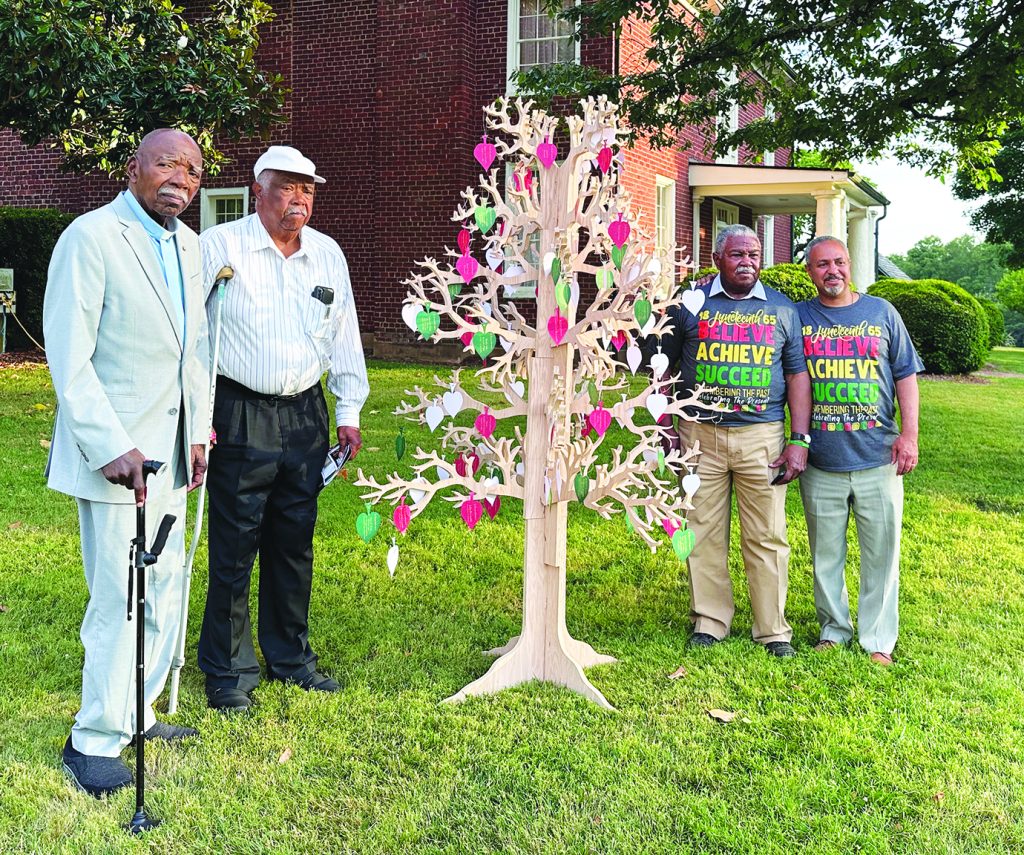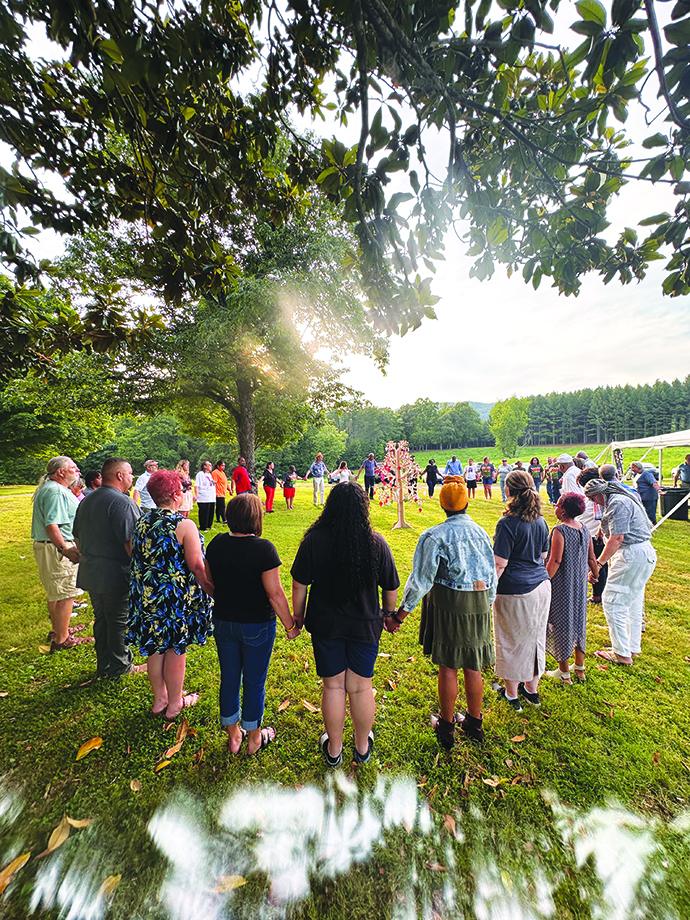On a sunny and breezy Wednesday afternoon, June 19, about 70 people gathered at Virginia Tech’s Reynolds Homestead in Critz, Virginia, to honor the men and women who were enslaved at the former Rock Spring Plantation.
A committee of men and women who are descendants of people who were enslaved on the plantation, led by committee chair Kimble Reynolds, Jr., planned the event that brought descendants together to share in their collective history and pay tribute to their ancestors.
The Reynolds Homestead, given to Virginia Tech in 1970, serves as part forest research project, part community gathering place, and part educational and cultural center. It includes the restored 1843 home where tobacco magnate R.J. Reynolds and his 15 siblings were born, several historic outbuildings, and a community engagement center.
Tours of the historic home, grounds, and African American cemetery were offered, as well as the opportunity to view historian John Whitfield’s research on the enslaved community, which included birth records, listings of those who lived on the plantation and those who were buried there.
Under a large white tent on the lawn beside the historic home, the choir from the First Christian Church of Stuart, sang rousing gospel tunes as people gathered. Kimble Reynolds welcomed the guests and provided remarks on the origin of Juneteenth, also known as Freedom Day for African Americans across the United States. Juneteenth commemorates the day when word of emancipation reached the enslaved people of Texas, the last state to free the men, women and children who had been enslaved there.


Following opening remarks, guests chatted with family and friends over a BBQ dinner supplied by Hylton’s Wood-Cooking Grill. Children and youth made bracelets and necklaces with Pan African colored beads of red, green, and gold. Red represents blood shared and shed. Green represents natural resources and growth. Gold represents hope, justice, and equality.
As plates were cleared from the tables, guests were given leaf-shaped cards on which there was a name of someone who had been enslaved, or buried on Rock Spring Plantation. Reynolds again took the stage to lead a ceremony in their honor.
“For the enslaved there was a day-to-day struggle to plant and nourish the seeds of hope. And, in the dark hours of their existence, they used their voices to light a torch of hope to shine against the resistance of oppression. Inch by inch, day by day, generation after generation, songs like ‘Swing Low Sweet Chariot’ amplified the voices for a better tomorrow. A solemn but powerful battle cry for emancipation. And there is no battle greater than the battle for freedom,” Reynolds said. “For some, the battle lasted for years. For others, the battle lasted for lifetimes.
Generations ago, our enslaved ancestors brought forth on this land the audacious idea and dreams that one day we would stand here in conditions better than they saw themselves. We sit and stand today on their battlefield.”
Following his remarks, Reynolds asked participants to raise the leaves they held as he called out the names of those who had been enslaved or buried at Rock Spring Plantation. As each name was raised, a brief silence followed to honor the person whose name had been called. Once all names were called, Reynolds invited participants to exit the tent and hang the leaves on a wooden tree constructed to serve as a memory tree honoring the enslaved community.
When all the leaves had been hung, participants were invited to join hands in a circle around the tree where Bishop Burgie Penn led everyone in a congregational song and offered a benediction.
As the program concluded, Reynolds gathered some of his relatives for a photograph beside the tree. All were descendants of Kitty Reynolds, who was the enslaved woman who was tasked with caring for Hardin and Nancy Reynolds’ children. Three generations stood proudly by the tree, two of Kitty’s grandsons , one great-grandson, and Kimble Reynolds, Jr, her great-great-grandson.



